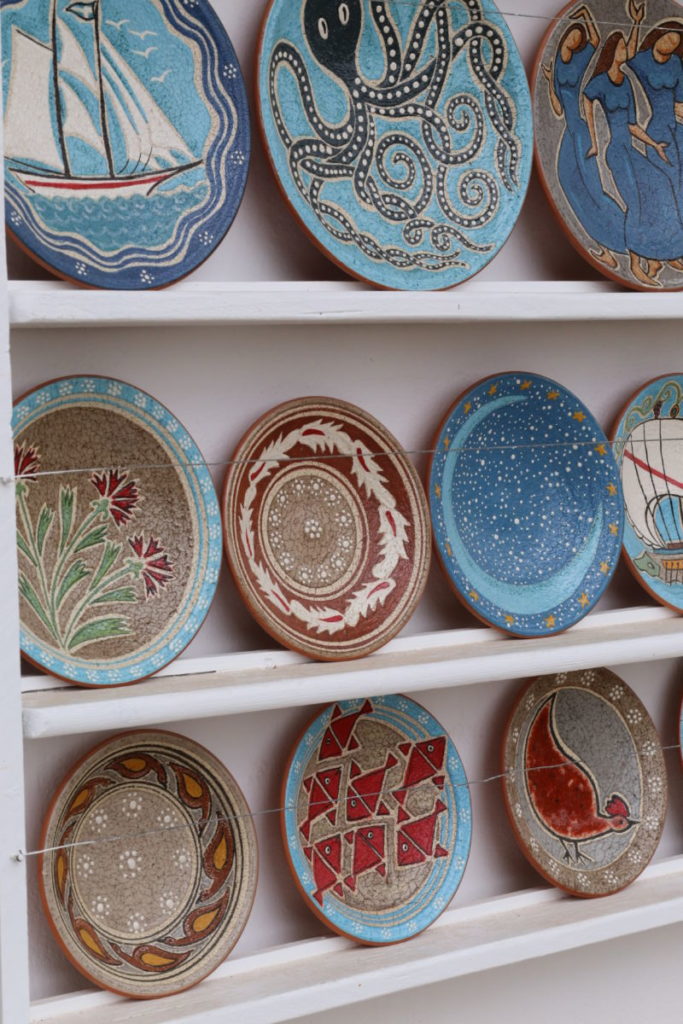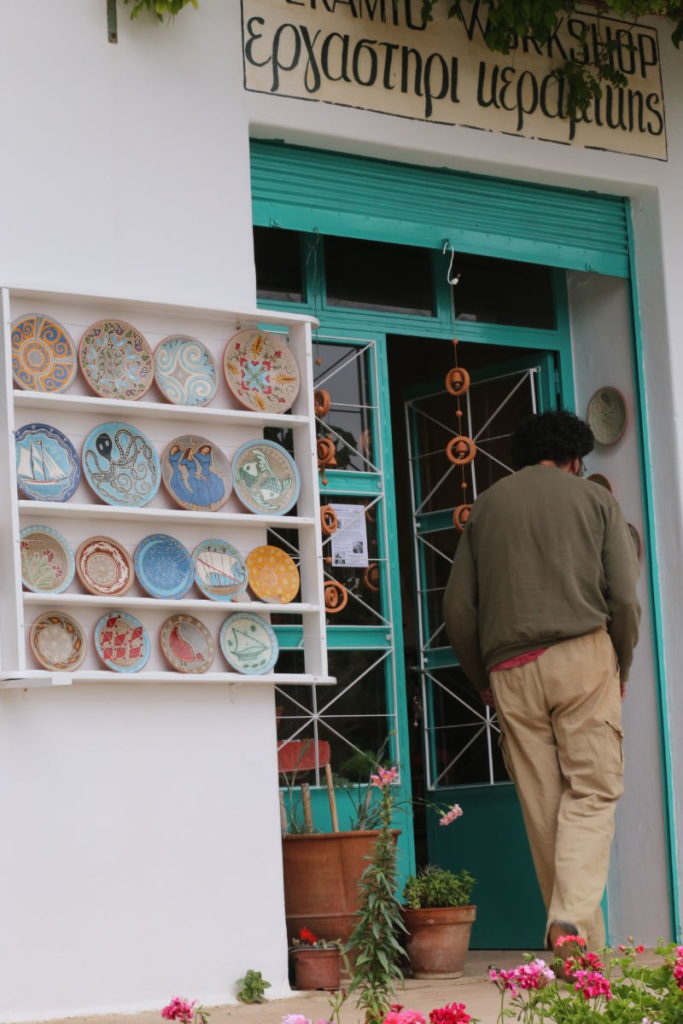Paros Ceramics
Introduction to Paros Ceramics
The island of Paros in the Cyclades has a long and storied history of ceramic production and Paros ceramics date back thousands of years. Its high quality clay deposits and strategic location along ancient maritime trade routes allowed Paros to become a renowned centre of pottery and ceramic-making for centuries.
From the vases and figurines of the ancient Greek and Roman eras to the Byzantine painted vessels to the unique Paros white ceramics of more recent centuries, the island has continuously produced distinctive pottery appreciated throughout Greece and beyond. Generations of craftsmanship and artistry developed, with villages like Lefkes becoming famous for their ceramic studios.
This article will explore the origins and highlights of Paros’ ceramics history, key archeological findings that shed light on its development and styles, the methods and signature aesthetics of Paros pottery, and the efforts to preserve this tradition today through museums and revived workshops. Whether you’re an archaeology buff, art enthusiast, or aspiring potter, the storied history of ceramics on Paros is a fascinating one.
Paros Ceramics – best workshops and galleries
- Yria Ceramic Studio – Gikas Stylianos (nw of Kostos) – Stelios has a lovely gallery in the serenity of the interior of Paros, presenting original and unique functional pieces influenced by ancient styles but with his own touch. Recommended. Also an outlet in Parikia but get to the studio if you can.
2. Noe Ceramics Paros – located in the south between Glifa and Aspro Chorio
Noe presents handmade decorative and functional pieces created in a sustainable manner. Brigitte and Petros (I think!) are very friendly and are happy to present their products to visitors – it is hard to come away without adding something to your collection. They work with clay from Crete and from Italy, white clay and coloured.
3. Todd Marshard Gallery – Lefkes
Todd is a NYC fashion photographer who has switched to devoting him time to ceramics and has set himself up in Lefkes after visiting Greece many times over the years. His Paros pottery work is simple but beautiful presenting ancient Greek themes in a modern world.
4. Keramiko by Eleni Spetsaki – Lefkes
Eleni presents a range of functional and ornamental (love the Pomegranates) Paros pottery work using white clay and beautifully decorated.


Paros Ceramics – modern history
The Greek war of independence in the early 1800s marked the beginning of the modern era for Paros ceramics. After centuries of foreign rule, Paros ceramics artists were able to reinvent the island’s pottery legacy.
This period saw the crystallization of the Paros white ceramics style the island is now famous for.
The distinguishing features of this style include:
- A clean, bright white color achieved by using the high calcium clay deposits near Lefkes village. The clay results in porcelain-like ceramics.
- A minimalist aesthetic with little ornamentation. Simple, flattened shapes with subtle curved edges.
- Sparing use of color. Most pieces are stark white, with occasional blue or green accents.
- A smooth, lustrous glazed surface. The clay is covered in a colorless glaze that gives a glossy finish after firing.
The village of Lefkes emerged as the centre of Paros’ pottery production during the modern era. Generations of pottery workshops and families honed their skills, carefully refining the Paros style sought after by collectors and artists.
Some of the most acclaimed ceramic workshops founded in Lefkes during the late 19th and early 20th centuries include:
- The Ipipis Workshop, founded in the 1870s. Known for their intricate relief patterning.
- The Poulis Workshop, founded in 1870. Developed the technique of “spotting” where colored glazes are added.
- Margaritis Ceramics, dating to 1910. Favored a minimalist style with clean lines.
- The Pamaris Workshop, 1920s. Introduced carved decorative elements.
Many workshops were passed down through generations of the same families, their secrets and techniques closely guarded. Rivalries and distinct stylistic details emerged that aficionados could discern.
By the mid-20th century, ceramics from Paros were being exported around the world, featured in international exhibits, and collected by museums. Paros solidified its reputation as Greece’s premier ceramics island.
While production slowed in the later decades of the 20th century, Paros white ceramics remain iconic today. New artists have stepped in to breathe life into the Paros pottery craft, ensuring this centuries-old tradition continues.
Paros Ceramics – preserving tradition
As with many of the old crafts, there is concern about the skills disappearing and hence there are conscious efforts to try to preserve and pass on those skills.
Ceramics Museums
Several museums on Paros showcase artifacts and the history of its iconic ceramics:
- The Archaeological Museum of Paros has a significant collection of ancient Greek and Byzantine era pottery found on the island.
- The Paros Folk Art Museum details the development of Paros white ceramics with authentic pieces.
- The Byzantine Museum exhibits ceramics from the early Byzantine period through Venetian rule.
- The Lefkes Community Museum displays tools and wares spanning the island’s ceramics history.
Workshops Offering Classes
Many traditional workshops in Lefkes and beyond have opened up to visitors and now provide hands-on pottery classes, such as:
- The Pottery Workshop allowing students to throw pots on the wheel.
- Margaritis Ceramics teaching their signature minimalist style.
- The Ceramic Arts offering lessons in glazing and painting techniques.
- Ancient Crafts Studio focused on ancient and Byzantine era methods.
Training New Artists
Programs aimed at passing the torch to new generations of Paros ceramicists have emerged:
- The Paros Ceramic Center provides multi-week intensive training for aspiring ceramicists.
- Local art schools include pottery in their curriculum and apprenticeship opportunities.
- Many workshops actively mentor younger family members to inherit their legacy.
Through these efforts, the future looks bright for maintaining Paros’ reputation for ceramic excellence into the 21st century and beyond.
